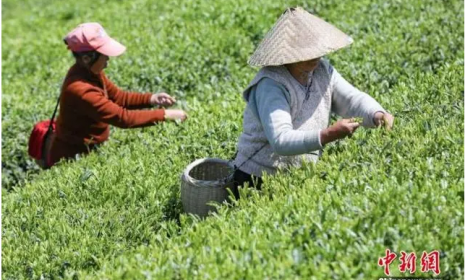2025年3月19日,歐盟食品安全局就一種食品酶內切-1,4-β-木聚糖酶(endo-1,4-β-xylanase)的安全性評價發布意見。
據了解,這種食品酶是由轉基因黑曲霉菌株XYL生產的,旨在用于4種食品制造過程。
經過評估,專家小組認為,在預期的使用條件下,不能排除通過飲食接觸引起過敏反應的風險,但這種情況發生的可能性很低。根據新的數據和以前提供的數據,小組得出結論,該食品酶在預期的使用條件下不會引起安全問題。部分原文報道如下:
The food enzyme endo-1,4-β-xylanase (4-β-d-xylan xylanohydrolase, EC 3.2.1.8) is produced with the genetically modified Aspergillus niger strain XYL by DSM Food specialties. An evaluation of this food enzyme was made previously, in which EFSA could not conclude on its safety due to data gaps in a genotoxicity test. Subsequently, the applicant provided new data. The genetic modifications do not give rise to safety concerns. The food enzyme is free from viable cells of the production organism and its DNA. The food enzyme is intended to be used in four food manufacturing processes. Dietary exposure was estimated to be up to 0.281 mg (total organic solids) TOS/kg body weight (bw) per day in European populations. Genotoxicity tests did not indicate a safety concern. The systemic toxicity was assessed by means of a repeated dose 90-day oral toxicity study in rats. The Panel identified a no observed adverse effect level of 4095 mg TOS/kg bw per day for males and of 4457 mg TOS/kg bw per day for females, respectively, the highest doses tested. When compared with the estimated dietary exposure, it results in a margin of exposure of at least 14,573. A search for the homology of the amino acid sequence of the endo-1,4-β-xylanase to known allergens was made and no match was found. The Panel considered that a risk of allergic reactions upon dietary exposure to the food enzyme cannot be excluded, but the likelihood is low. based on the new data and the data provided previously, the Panel concluded that this food enzyme does not give rise to safety concerns, under the intended conditions of use.
據了解,這種食品酶是由轉基因黑曲霉菌株XYL生產的,旨在用于4種食品制造過程。
經過評估,專家小組認為,在預期的使用條件下,不能排除通過飲食接觸引起過敏反應的風險,但這種情況發生的可能性很低。根據新的數據和以前提供的數據,小組得出結論,該食品酶在預期的使用條件下不會引起安全問題。部分原文報道如下:
The food enzyme endo-1,4-β-xylanase (4-β-d-xylan xylanohydrolase, EC 3.2.1.8) is produced with the genetically modified Aspergillus niger strain XYL by DSM Food specialties. An evaluation of this food enzyme was made previously, in which EFSA could not conclude on its safety due to data gaps in a genotoxicity test. Subsequently, the applicant provided new data. The genetic modifications do not give rise to safety concerns. The food enzyme is free from viable cells of the production organism and its DNA. The food enzyme is intended to be used in four food manufacturing processes. Dietary exposure was estimated to be up to 0.281 mg (total organic solids) TOS/kg body weight (bw) per day in European populations. Genotoxicity tests did not indicate a safety concern. The systemic toxicity was assessed by means of a repeated dose 90-day oral toxicity study in rats. The Panel identified a no observed adverse effect level of 4095 mg TOS/kg bw per day for males and of 4457 mg TOS/kg bw per day for females, respectively, the highest doses tested. When compared with the estimated dietary exposure, it results in a margin of exposure of at least 14,573. A search for the homology of the amino acid sequence of the endo-1,4-β-xylanase to known allergens was made and no match was found. The Panel considered that a risk of allergic reactions upon dietary exposure to the food enzyme cannot be excluded, but the likelihood is low. based on the new data and the data provided previously, the Panel concluded that this food enzyme does not give rise to safety concerns, under the intended conditions of use.













